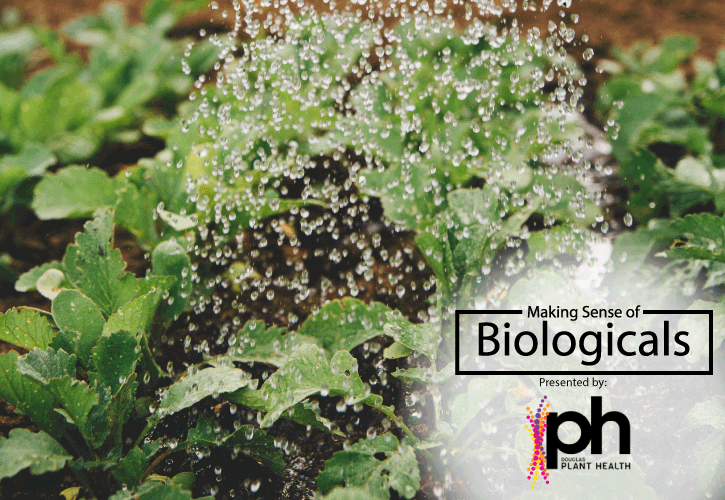
Biofertilizers encourage bigger vegetable roots
By Clint Thompson
Bigger is better when it comes to vegetable crop roots. Larger roots lead to greater exploration of the soil, where roots can capture more nutrients.
A more robust root system leads to improved fertilizer efficiency and better crop quality. So how do growers achieve this kind of success?
According to Mark Egan, an agronomist with Douglas Plant Health (DPH), biofertilizers help build up the root systems of vegetable crops when applied at an opportune time.
Increasing Fertilizer Efficiency
“The importance of building a stronger root system is to increase fertilizer-use efficiency,” Egan said. “More roots mean more root exploration in the soil, hence more of the applied fertilizer is absorbed.”
Biofertilizers contain microorganisms, and if added to the soil, they can enhance fertility and promote plant growth. Douglas Plant Health features several biofertilizers that benefit vegetable and specialty crops, including SP-1™, a premier, proprietary solution designed to improve soil structure, nutrient availability and water-use efficiency.
If producers can enhance their plants’ root systems, the impact can be felt long after the crop has been harvested. Egan, a one-time lettuce farmer, understands the challenge of picking and shipping a crop that maintains its quality. The characteristics that help produce stay fresh are derived from plants with strong, healthy roots.
“Bigger roots yield better mineral nutrition, which leads to better produce quality,” Egan said. “That improved quality directly impacts how much the grower gets paid, or whether they get paid at all.”
Timing is Critical
Egan advises growers who use biofertilizers to make their applications near the roots as soon as possible, since there are already native organisms within the soil competing to colonize those roots. He added, “A biofertilizer such as SP-1™ can outcompete native microbes to achieve better mineral nutrition, plant health and produce quality.”
Egan also recommends applying a biofertilizer prior to picking or just after a stress event such as a pest infestation or hail.
Filling the Breeding Gap
Egan said biofertilizer applications are valuable since root systems are largely overlooked during breeding research.
“If you look at cereal grains, corn, wheat and the breeding efforts that have been put into them over the centuries, they were bred to be very adaptive to the environment they’re grown in. As a result, they were bred with very strong, very aggressive root systems,” Egan said. “On the other hand, the primary focus of breeding produce has been increasing the amount of fruit harvested. Even more recently, the biggest breeding efforts have been focused on disease resistance and shipping quality … Breeding has been targeted to what’s above ground.”
According to Egan, with plant breeding, you never get something for nothing. “Consequently, most produce crops have underdeveloped root systems that often can’t keep up with demand for water and nutrients,” he said. “SP-1™ can restore overall plant vigor that breeding programs have bred out.”
Visit douglasplanthealth.com to learn more about DPH biologicals or call 815-872-1190 to speak with an expert agronomist.









